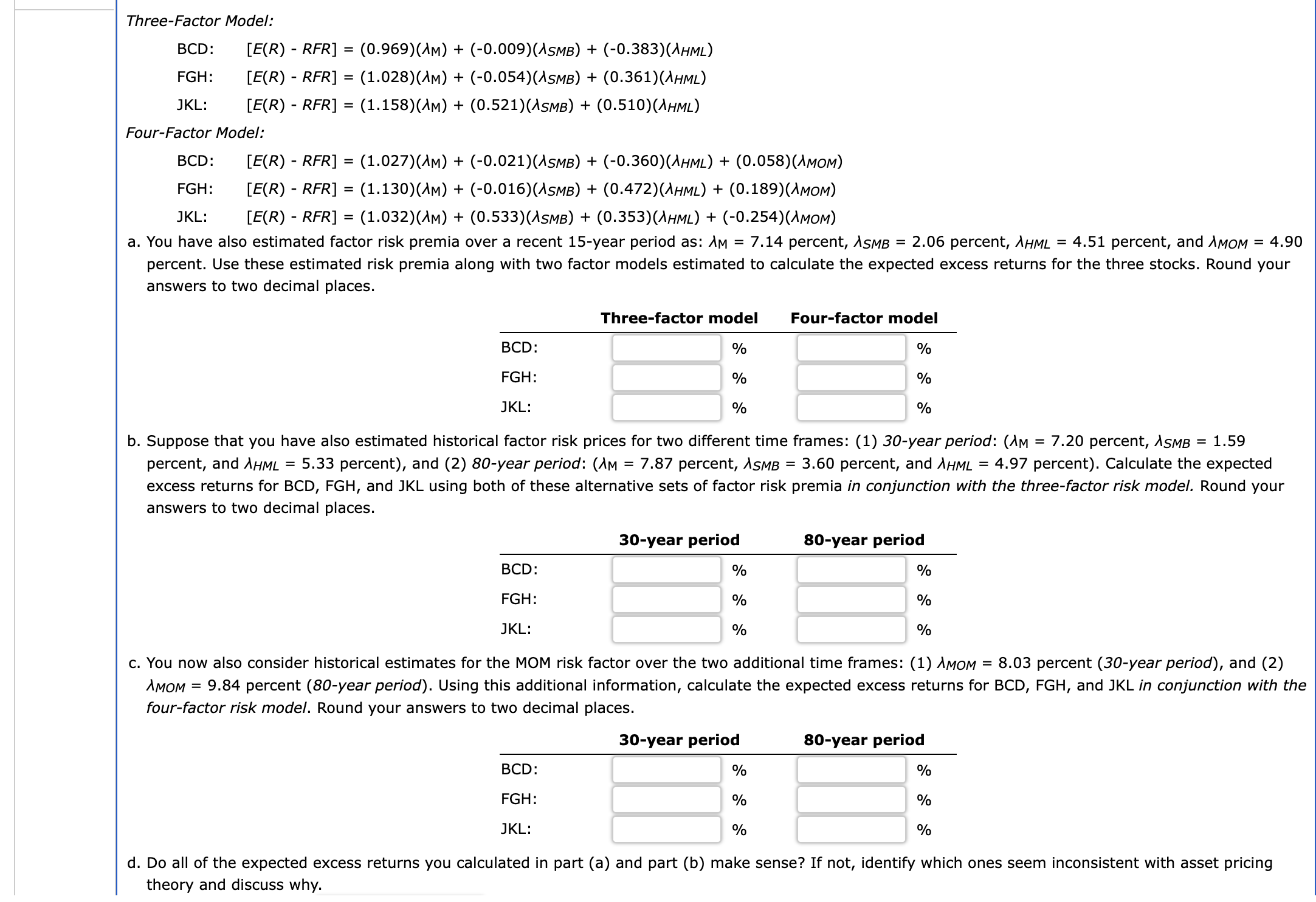Answered step by step
Verified Expert Solution
Question
1 Approved Answer
Three-Factor Model: BCD:,[E(R)-RFR]=(0.969)(lambda _(M))+(-0.009)(lambda _(SMB))+(-0.383)(lambda _(HML)) FGH:,[E(R)-RFR]=(1.028)(lambda _(M))+(-0.054)(lambda _(SMB))+(0.361)(lambda _(HML)) JKL:,[E(R)-RFR]=(1.158)(lambda _(M))+(0.521)(lambda _(SMB))+(0.510)(lambda _(HML)) Four-Factor Model: BCD:,[E(R)-RFR]=(1.027)(lambda _(M))+(-0.021)(lambda _(SMB))+(-0.360)(lambda _(HML))+(0.058)(lambda _(MOM)) FGH:,[E(R)-RFR]=(1.130)(lambda _(M))+(-0.016)(lambda _(SMB))+(0.472)(lambda
Three-Factor Model:\
BCD:,[E(R)-RFR]=(0.969)(\\\\lambda _(M))+(-0.009)(\\\\lambda _(SMB))+(-0.383)(\\\\lambda _(HML))\ FGH:,[E(R)-RFR]=(1.028)(\\\\lambda _(M))+(-0.054)(\\\\lambda _(SMB))+(0.361)(\\\\lambda _(HML))\ JKL:,[E(R)-RFR]=(1.158)(\\\\lambda _(M))+(0.521)(\\\\lambda _(SMB))+(0.510)(\\\\lambda _(HML))\ Four-Factor Model:\
BCD:,[E(R)-RFR]=(1.027)(\\\\lambda _(M))+(-0.021)(\\\\lambda _(SMB))+(-0.360)(\\\\lambda _(HML))+(0.058)(\\\\lambda _(MOM))\ FGH:,[E(R)-RFR]=(1.130)(\\\\lambda _(M))+(-0.016)(\\\\lambda _(SMB))+(0.472)(\\\\lambda _(HML))+(0.189)(\\\\lambda _(MOM))\ JKL:,[E(R)-RFR]=(1.032)(\\\\lambda _(M))+(0.533)(\\\\lambda _(SMB))+(0.353)(\\\\lambda _(HML))+(-0.254)(\\\\lambda _(MOM))\ a. You have also estimated factor risk premia over a recent 15-year period as:
\\\\lambda _(M)=7.14percent,
\\\\lambda _(SMB)=2.06percent,
\\\\lambda _(HML)=4.51percent, and
\\\\lambda _(MOM)=4.90\ percent. Use these estimated risk premia along with two factor models estimated to calculate the expected excess returns for the three stocks. Round your\ answers to two decimal places.\ b. Suppose that you have also estimated historical factor risk prices for two different time frames: (1) 30-year period: percent,
\\\\lambda _(SMB )=1.59\ percent, and
\\\\lambda _(HML)=5.33percent

Step by Step Solution
There are 3 Steps involved in it
Step: 1

Get Instant Access to Expert-Tailored Solutions
See step-by-step solutions with expert insights and AI powered tools for academic success
Step: 2

Step: 3

Ace Your Homework with AI
Get the answers you need in no time with our AI-driven, step-by-step assistance
Get Started


